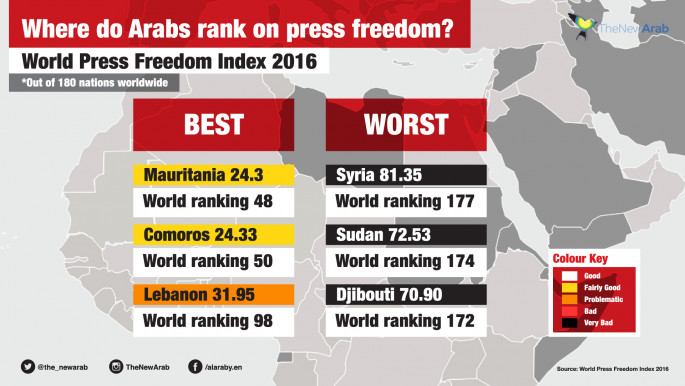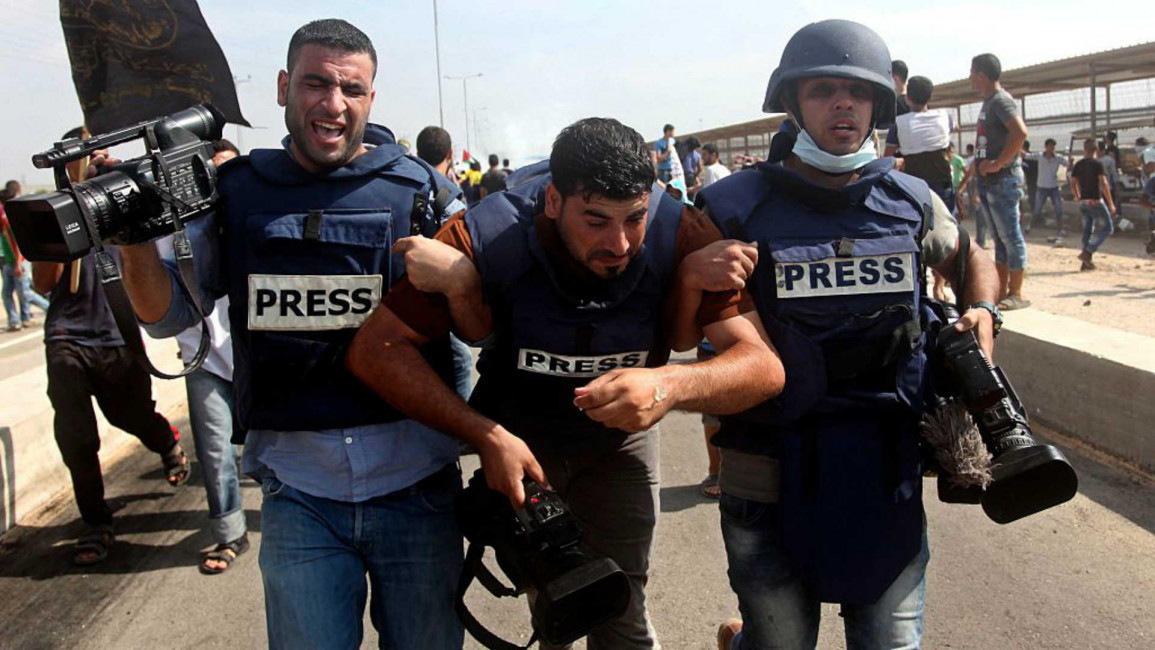Syria, Iraq most dangerous places for journalists in 2017
Sixty-five journalists and media workers were killed worldwide in 2017, according to annual figures published by Reporters Without Borders (RSF) on Tuesday, while Syria and Iraq reemain among the worst places in the world for journalists.
Twenty-six were killed in the course of their work as victims of collateral damage, the report says, including airstrikes, artillery bombardment of suicide bombing.
The other 39 were murdered in deliberate targeted attacks, the RSF report said, noting that among the overall total were 50 professional reporters.
War-torn Syria remains the most dangerous country in the world for journalists, RSF said, with 12 reporters killed, followed by Mexico where 11 were assassinated.
In Iraq, eight journalists, including local and foreign reporters, were killed in targeted attacks by the Islamic State group. Iraqi Kurdish journalist Bakhtiyar Haddad was killed alongside French journalist Stephan Villeneuve and Swiss Véronique Robert in Mosul.
Nine journalists were killed in Afghanistan in three different attacks this year. Of those killed two were professional journalists and seven media workers, the report said.
In South Sudan, American freelance reporter Christopher Allen was killed by a shot to the head amid clashes between the South Sudanese army and members of the SPLA-IO rebel group.
The report also notes 10 women journalists were killed this year - twice as many as the previous year.
The overall number of professional reporters slain worldwide, however, fell to its lowest number in 14 years, RSF said.
The group said that the drop in the death rate may be because journalists were now being better trained and protected for war zones.
"The downward trend is also due to journalists abandoning countries that have become too dangerous," it added.
"Countries such as Syria, Iraq, Yemen, and Libya have been haemorrhaging journalists." But the trend is not confined to countries at war, RSF added.
Hostages
Meanwhile, Turkey is the world's biggest prison for professional journalists, the figures show, with 42 reporters and one media worker behind bars.
"Criticising the government, working for a 'suspect' media outlet, contacting a sensitive source or even just using an encrypted messaging service all constitute grounds for jailing journalists on terrorism charges," the report said.
RSF also note the fate of journalists held hostage “by non-state actors that threaten to kill or injure them, or continue to hold them as means of pressure on a third party (a government, organisation, or group) with the aim of forcing the third party to take a particular action.”
There is a 4 percent increase in journalists currently being held – a total number of 54 concentrated 96 percent of which are held in the Middle East.
In Yemen, Houthi rebels are holding 11 journalists and media workers hostage, compared with 16 this time last year, according to figures by RSF. Further south, al-Qaeda militants are holding one journalist hostage.
Meanwhile in Syria and Iraq, figures show 40 journalists are being held by the Islamic State group or other radical groups such as al-Nusra.
Seven foreign journalists are currently held hostage in Syria, ranking it the highest for foreign hostages in the world.




